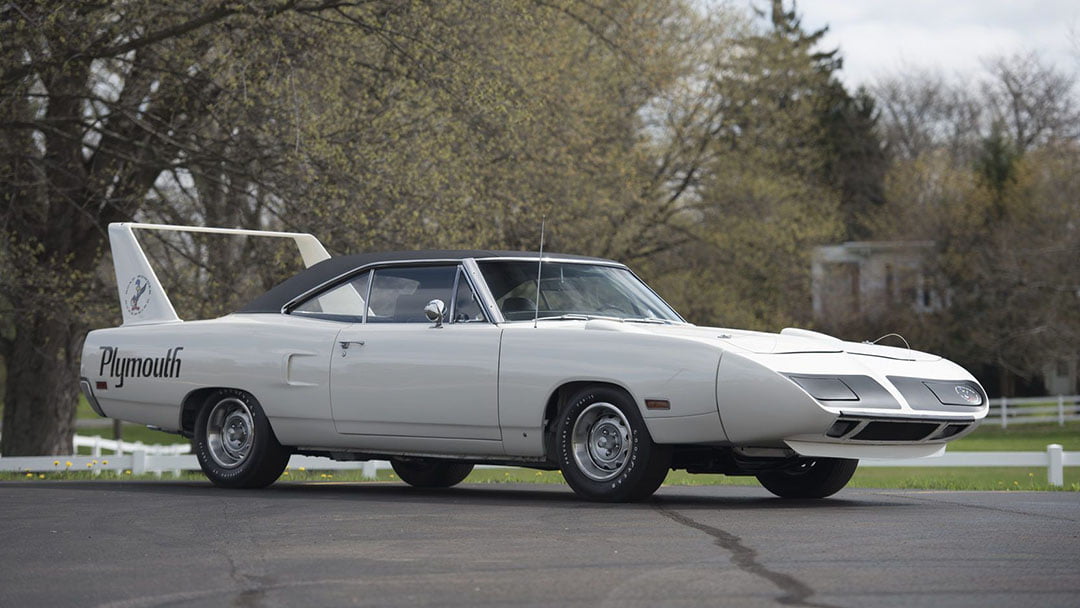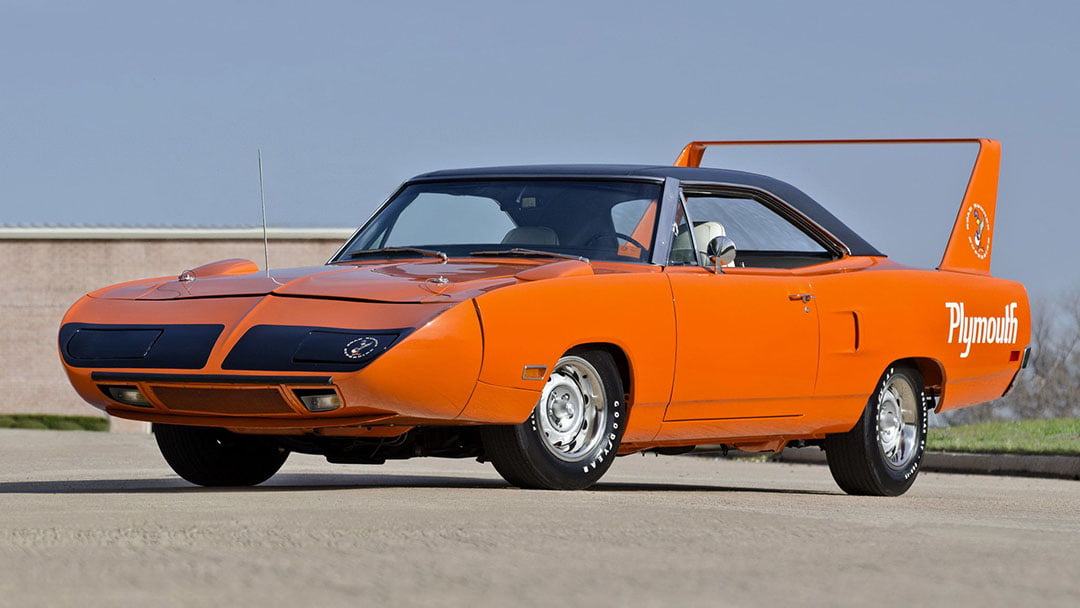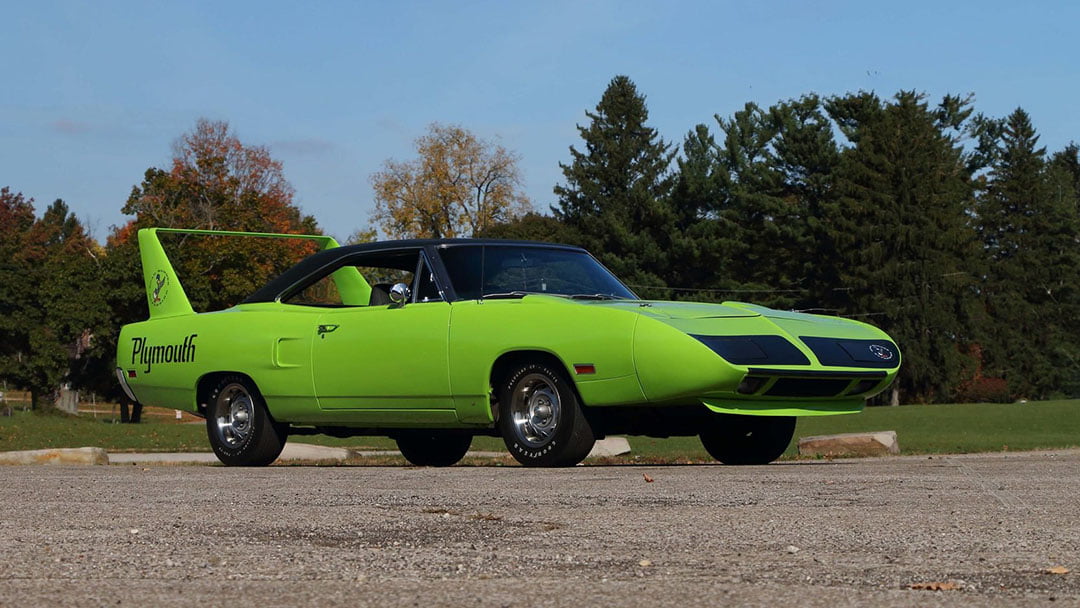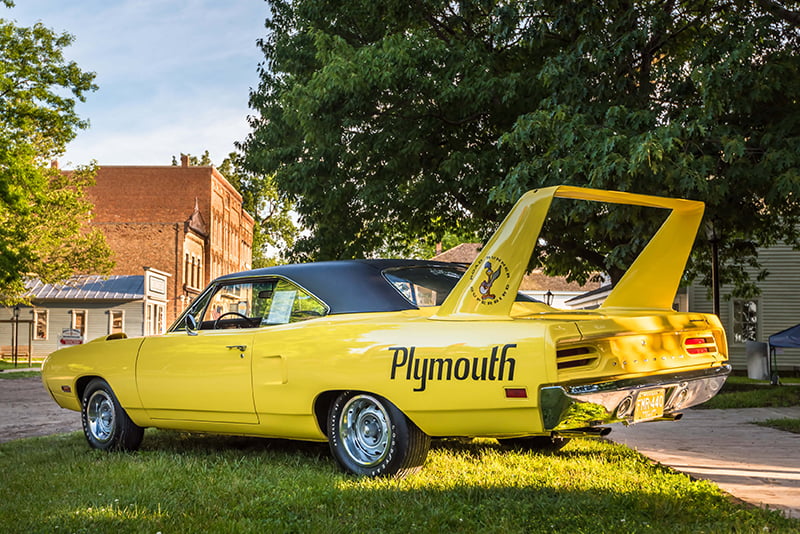The 1970 Plymouth Superbird is arguably one of the most easily recognisable cars of it’s time, but how did this conspicuous looking automobile get so expensive?
As the demand for the earliest muscle cars still persists, their market value has only continued to soar. However, to the uninitiated, it’s somewhat of a mystery as to how this whacky looking muscle car of the early seventies still manages to command such astonishing figures, with the highest record sale price for a 1970 Plymouth Superbird coming in at an eye watering USD $575,000. While this number isn’t a record breaker when compared to other classic cars, it’s still somewhat of an anomaly when compared to other muscle cars of the same era – so what’s so special about the Superbird?
 The Origins Of The 1970 Plymouth Superbird
The Origins Of The 1970 Plymouth Superbird
The National Association for Stock Car Auto Racing, LLC is an American auto racing sanctioning and operating company, and the privately owned enterprise was founded by Bill France Sr. in 1948. If you’re unfamiliar with the company, it’s more commonly known as NASCAR, who were responsible for making stock-car racing a widely popular sport in the United States by the turn of the 21st century.
 Thanks to its rear wing that towers over any other car and a dart-like front nose cone, the 1970 Plymouth Superbird – otherwise known as the Roadrunner – is a true icon of NASCAR history in the United States. It was designed to compete with the Dodge Charger Daytona that was also one of the so-called ‘Winged Warriors’, famous for their large wing and a pointy front end.
Thanks to its rear wing that towers over any other car and a dart-like front nose cone, the 1970 Plymouth Superbird – otherwise known as the Roadrunner – is a true icon of NASCAR history in the United States. It was designed to compete with the Dodge Charger Daytona that was also one of the so-called ‘Winged Warriors’, famous for their large wing and a pointy front end.
In those days, only cars available to the general public were allowed to participate in the actual races, so NASCAR gave these companies a chance to put their best cars head to head and prove exactly who was the fastest contender. However, at the time, the standard muscle car had a square front end, and in turn encountered a lot of air resistance and couldn’t push past a speed barrier at 175mph. As a result, Chrysler stepped up to the plate and delivered not one, but two supercars – the Dodge Charger Daytona 500 and the Plymouth Superbird – as a means to finally push past this figure.
As a result, the 1970 Plymouth Superbird was one of the first to be designed using wind-tunnels and computer analysis. The results were ground-breaking, and this car was way ahead of its time in terms of speed and aerodynamics. Along with the Superbird’s speed and historical significance, the car is so expensive as it is simply that rare.
 Although the Superbird won many races, all of the so called ‘aero cars’ from 1970 and 1971 were quickly banned from NASCAR races – they were too fast to drive safely. Off the track, consumers just didn’t like the look of the car, which resulted in sluggish sales. Many dealers even had to remove the characteristic spoiler and nose to move them off the lot. As a result, there were only around 1,920 of these cars ever manufactured, with an estimated 1,000 of these still left in circulation today. Thus, it’s easy to see why the perfect storm of circumstances sees the 1970 Plymouth Superbird commanding such high prices in today’s market.
Although the Superbird won many races, all of the so called ‘aero cars’ from 1970 and 1971 were quickly banned from NASCAR races – they were too fast to drive safely. Off the track, consumers just didn’t like the look of the car, which resulted in sluggish sales. Many dealers even had to remove the characteristic spoiler and nose to move them off the lot. As a result, there were only around 1,920 of these cars ever manufactured, with an estimated 1,000 of these still left in circulation today. Thus, it’s easy to see why the perfect storm of circumstances sees the 1970 Plymouth Superbird commanding such high prices in today’s market.
Your Guide To Everything Classic Cars
Finding a fellow vintage auto enthusiast can feel a bit like finding a needle in a haystack, but rest assured that Classic’s Garage understands the thrill more than most. Having spent forty years collecting anything and everything from matchbox cars to hub caps, he’s successfully followed his passion to source, collect and stock beautiful and low mileage classic automobiles from around the world. With extensive experience in the automotive industry, it was only a matter of time before Wayne expanded on his love of vintage, iconic vehicles to share his knowledge and passion with the public.
 Although his passion is for automobiles built before 1978, with a particular love for Buicks, Cadillacs, Lincolns, Oldsmobiles and even Fords, Wayne is just as passionate about the stories of the owners. Just like the cars, he has found that his fellow classic car enthusiasts all have wildly different attractions and logic behind their passion or hobby, and this often translates into how the car is presented. If it’s even remotely different, rare or just plain unusual, Wayne will overcome the relevant logistical and geographical challenges of bringing the cars to his showroom in Australia.
Although his passion is for automobiles built before 1978, with a particular love for Buicks, Cadillacs, Lincolns, Oldsmobiles and even Fords, Wayne is just as passionate about the stories of the owners. Just like the cars, he has found that his fellow classic car enthusiasts all have wildly different attractions and logic behind their passion or hobby, and this often translates into how the car is presented. If it’s even remotely different, rare or just plain unusual, Wayne will overcome the relevant logistical and geographical challenges of bringing the cars to his showroom in Australia.
Classic’s Garage is a showroom conveniently located at Seventeen Mile Rocks, that specialises in the restoration and sales of vintage automobiles. If you’re on the hunt for Brisbane classic cars – quite simply, Wayne is your man. If you would like to arrange a viewing or inspect any other of our classic vehicles, please get in touch with us today.


 The Origins Of The 1970 Plymouth Superbird
The Origins Of The 1970 Plymouth Superbird